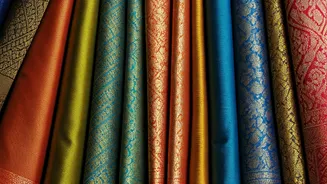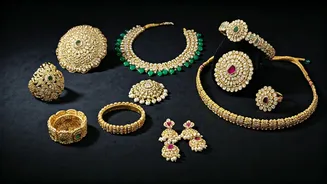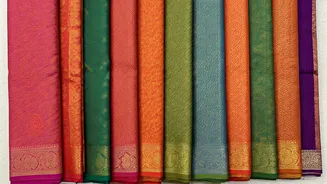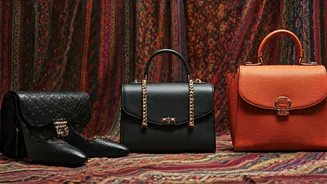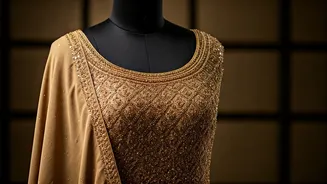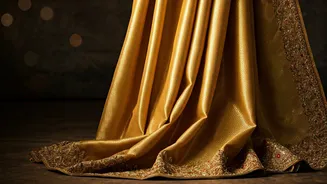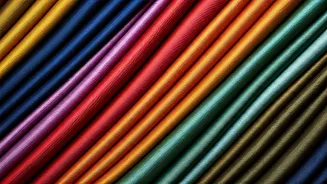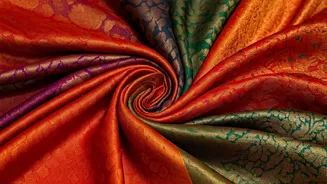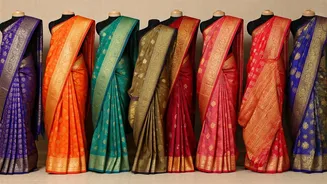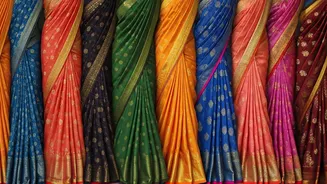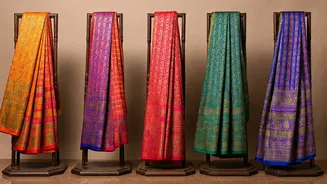Traditional Roots Reimagined
India's rich heritage significantly influences its fashion landscape. Traditional garments like sarees, kurtas, and lehengas are constantly reinvented.
Designers are fusing age-old techniques such as intricate embroidery, handloom weaving, and block printing with contemporary silhouettes. This creates a harmonious blend of the old and new, making traditional wear relevant for modern sensibilities. The use of vibrant colors, luxurious fabrics, and detailed craftsmanship continues to be central, offering a timeless appeal. These reimagined classics often appeal to both Indian and international audiences, celebrating the nation's cultural identity through stylish expression.
Modern Fusion Styles
The fusion of Western and Indian aesthetics represents a significant trend in Indian fashion. This includes incorporating Western-style cuts and designs into traditional fabrics and embellishments. Think of kurtis with jeans, sarees paired with crop tops, or lehengas with off-shoulder blouses. This trend mirrors a globalized world where cultures merge, and fashion becomes a canvas for creative expression. This fusion allows for individual style, giving people the freedom to experiment with different aesthetics. The adaptability of fusion wear makes it popular across age groups and occasions, whether a casual outing or a special celebration.
Influences & Inspirations
Indian fashion draws inspiration from numerous sources. Bollywood, with its glamorous stars, is a major trendsetter, driving demand for specific styles. Regional cultures and art forms also provide rich inspiration, with each state contributing its unique textile traditions and design elements. Social media and the internet have opened the fashion world, showcasing global trends and facilitating instant inspiration. Designers frequently look to the past for inspiration, reinterpreting historical designs and motifs. This dynamic interplay of influences continually refreshes Indian fashion, ensuring it remains dynamic and exciting.
Key Fashion Designers
India has a growing roster of talented fashion designers, each with a distinct vision. Some designers focus on reviving traditional crafts, while others concentrate on modern, avant-garde designs. Names like Sabyasachi Mukherjee are known for their luxurious bridal wear and intricate craftsmanship. Others, like Manish Malhotra, have shaped the Bollywood look and contributed significantly to mainstream style. Designers are not limited to one style; instead, they have many options. These designers are constantly innovating, pushing boundaries, and gaining international recognition for their work.
Fabric and Textiles
Fabrics and textiles play a crucial role in Indian fashion. India is home to a rich variety of fabrics, including silk, cotton, and linen. Handloom textiles are particularly celebrated, as they represent the country's heritage of weaving and sustainable practices. Designers are increasingly using organic and eco-friendly fabrics, promoting ethical consumption. The textile industry is also experimenting with new materials and techniques, such as digital printing, which allows for complex designs. This emphasis on quality fabrics and craftsmanship elevates the overall look and feel of Indian fashion.
Emerging Trends Forecast
Several emerging trends are set to define the future of Indian fashion. Sustainability is a key focus, with increasing demand for eco-friendly fabrics and ethical production. Minimalism is gaining traction, with a focus on simple yet elegant designs. Fusion wear will continue to evolve, with more innovative combinations. Digital technologies are transforming the industry, with online shopping and virtual fashion gaining popularity. The trend toward personalization and customization, where individuals can create unique garments, is also expected to rise. In this evolving landscape, Indian fashion will remain a dynamic force.
